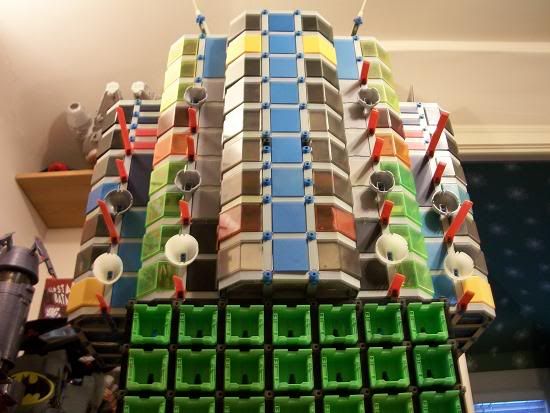

What you're now looking at is unquestionably the most complex design I have ever put together for this site. While it's not the tallest structure I've ever built (that honor goes to the old Command Tower) nor the deepest (the Death Star still holds that honor), it contains the most spaces, uses the most parts, and was generally the recipient of the most work and creativity because it is the result of roughly eighteen years of development (this is the fourth incarnation of the Mobile Command Fortress, though the first one long predates this site).
This is an extension of the previous A208 Mobile Command Fortress, but I've added so much to the design (roughly 80% of this is new), that it clearly warranted a new name and entry on the site. You'll find that, with a redesigned first floor, a completely overhauled third floor, and brand new fourth and fifth floors, the only space in this fortress left relatively unchanged is the second level. In fact, this 2.5' tall mammoth is literally twice the height of the predecessor it was built upon and required roughly $150 worth of new parts to complete.
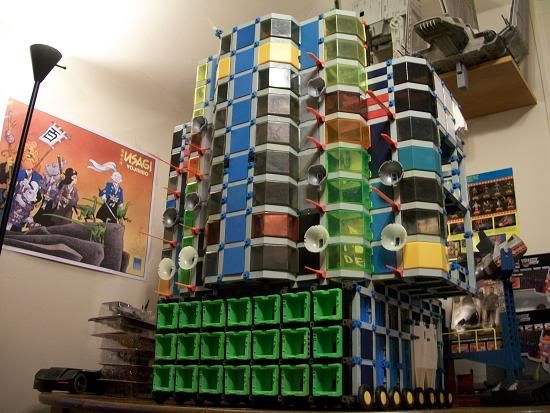
Though there are many new spaces in this design that I absolutely love, what I'm probably most proud of is the fact that the crew of this mobile fortress finally has all the resources they need in order to exist comfortably on a prolonged assignment. I've thought of and included it all, from recreational quarters to a sick bay and mess hall. All that's missing are the rest rooms, and I don't really feel that including them would have added anything to the experience.

The new exterior. It's a heck of a lot bigger now (six windows taller in the main section, and two taller in the wings). I also decided to remove the frontal "nose" from the previous incarnation, which required some subtle rearranging of the reverse wall in main engineering.

The interior from a distance. You'll notice that I've added support beams to the wing rooms now. I don't care for their look, and it closes in the wing rooms a bit more, but it helps the integrity of the entire structure immeasurably. I've worked quite hard to maintain structural integrity while building so high, wide, and open.
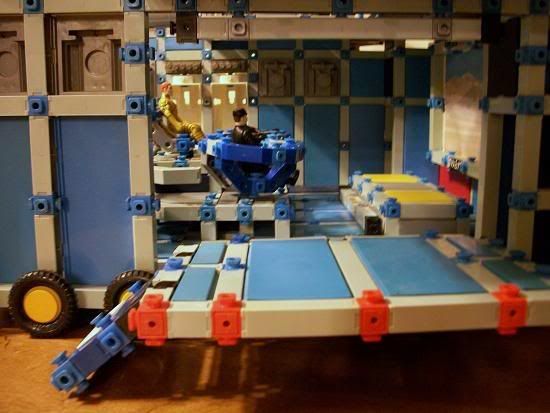
The ground level entrance to the Command Fortress. The door swings out with an additional ramp to the ground, just as in the old version.
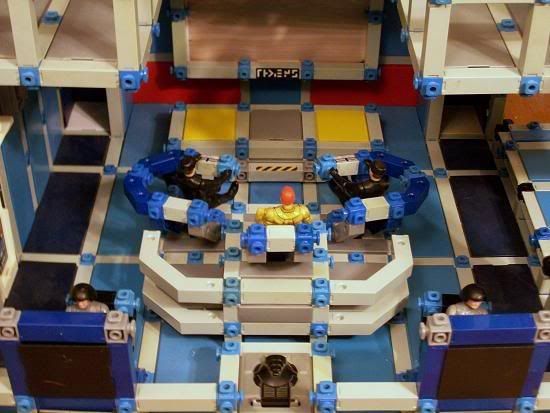
Level 1: The Command Level
This is the first time since I built the A207 in 1992 that I have overhauled the command stations. I think this setup utilizes the space a lot better, provides a more open environment for play, and is generally more exciting to look at.
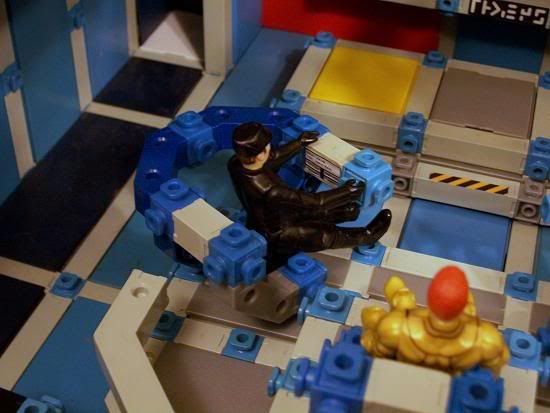
Here's a closer look at the helm station (the tactical station to the right is identical). Its design borrows heavily from the Cobra Space Outpost: Viper, though I have added some additional support to the "arm" of the chair.
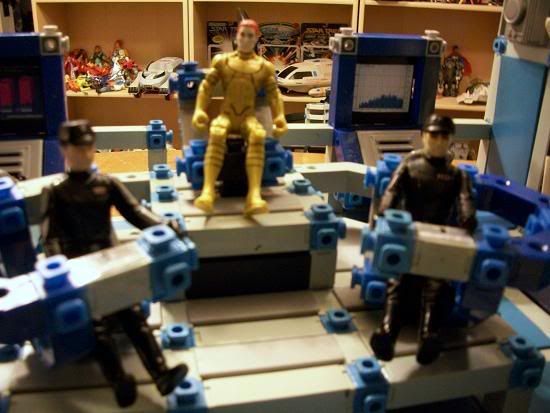
Reverse angle of the captain's chair and accompanying work stations.

Another angle. It's hard to fully capture such a tight space on camera.
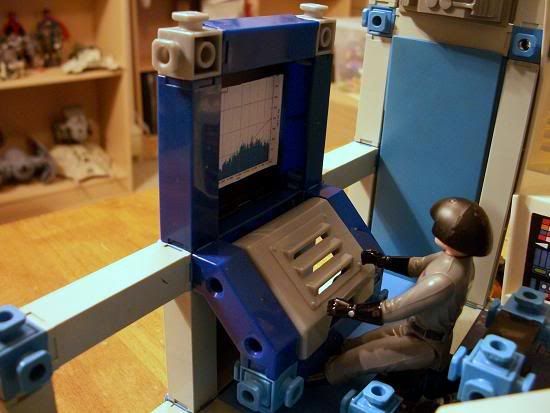
Here's one of the additional science stations that I have added to this level. The nice display screen is wasted when viewing this level from the rear, but it's still nice to know it's there.
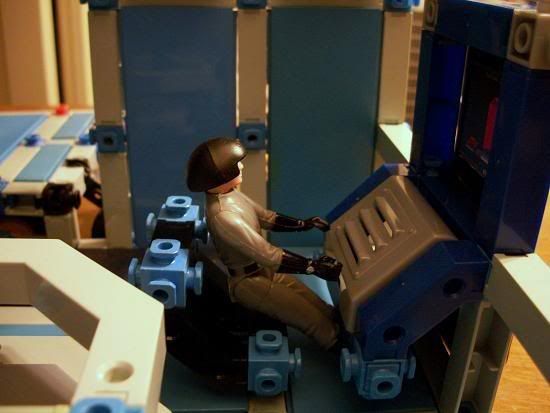
Another new science station.
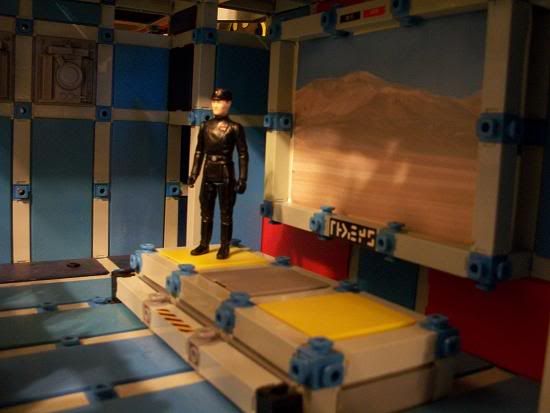
The Transporter pad. This has not changed from the previous A208 design. It still conceals an additional set of support wheels beneath it. There are also additional support wheels beneath the captain's chair and the fuel chamber toward the rear of the level in order to keep the enormous ground floor from sagging in the middle.
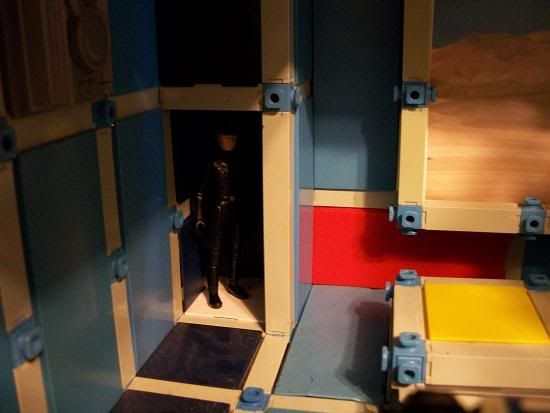
Just as in the previous model, the A209 is fitted with two turbolifts, one at each of the front corners of the fortress. They run all the way from the Command Level to the roof. In reality, they are simply empty shafts. I have developed quite a few elevators for fortresses over the years, but none were sleek and user-friendly enough to suit the technology level of this fortress.
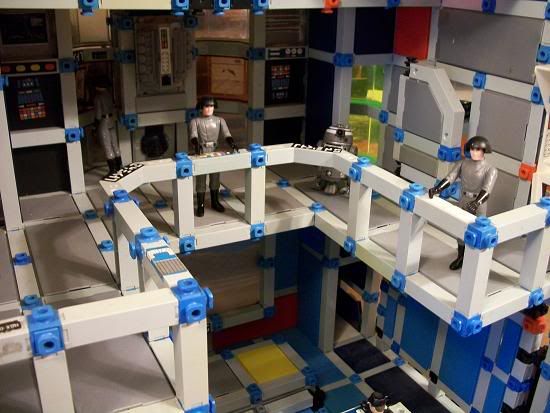
Level 2: Engineering
Nothing has changed on this level aside from the main engine apparatus, which I have subtly brought in from the far wall a tad in order to remove the necessity for a frontal "nose" on the main exterior wall. The main engine apparatus protrudes slightly out of its backside.
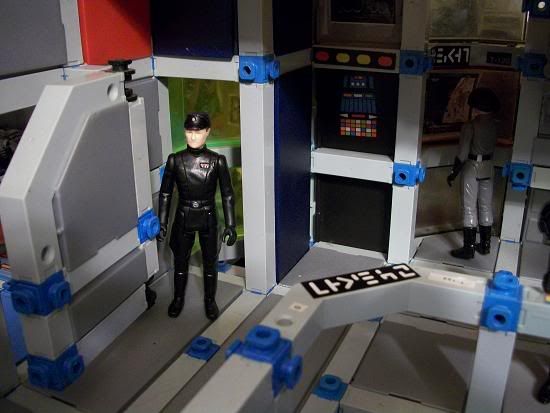
Our officer disembarks from the turbolift on this level.
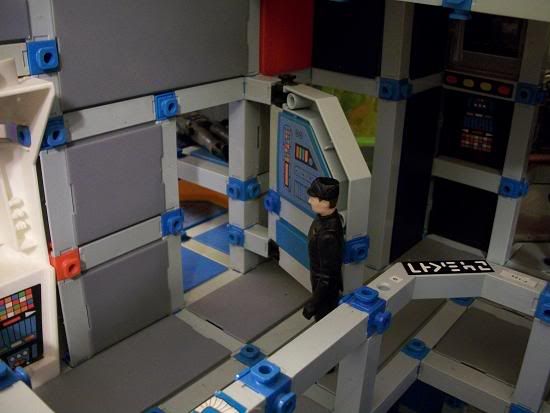
He checks in on the engineering crew's personal quarters.
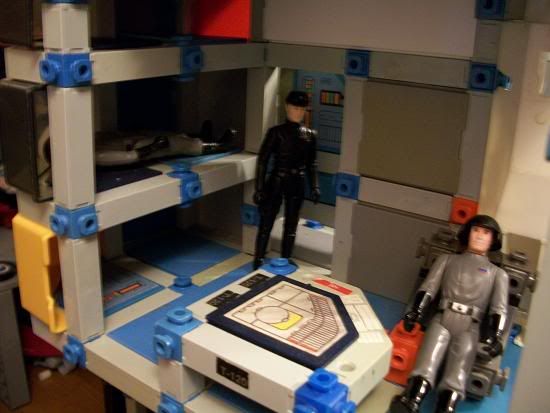
Level 2, left wing
The Engineering crew personal quarters, complete with swivel chair, entertainment table (perhaps with a computer or video game system built into it), and three bed spaces that are extra wide in order to double as storage areas when needed.
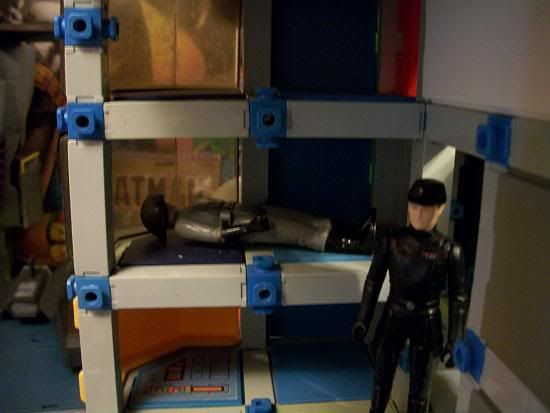
Right now, only one bed is being used which allows for the upper bunk to store ship supplies and the open space on the floor below to be used to store foot lockers for the crew's personal belongings.
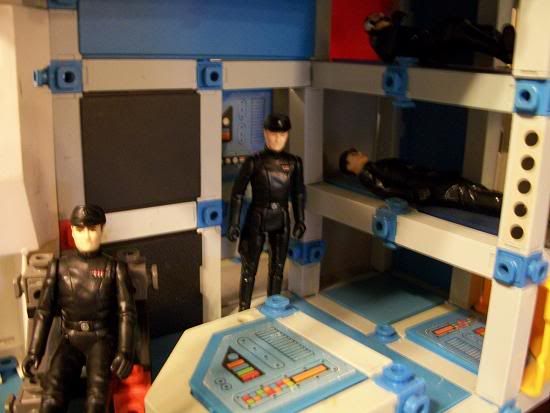
Level 2, right wing
Identical quarters for Command Level crew.
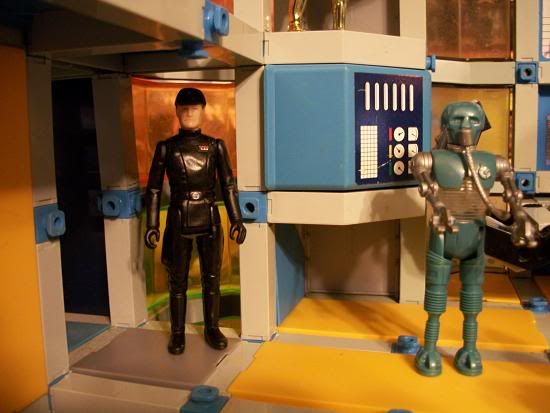
Level 3: Medical Bay / Research Facility
Finally on to the new stuff...

Here we have a split level facility that is capable of treating illnesses and injuries as they occur, but its primary function is research
(just because I love sci-fi laboratory settings!).

Our officer is invited to lie on the operating table.
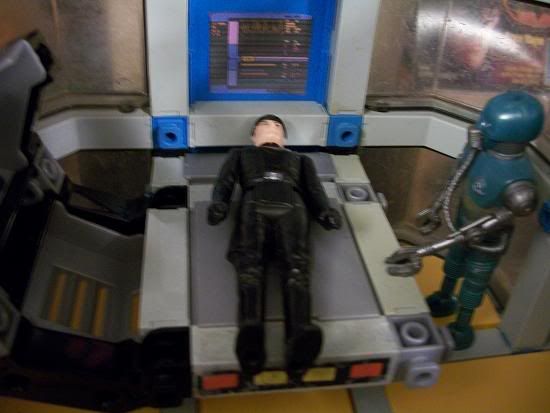
One doesn't turn down an invitation from a commanding officer, even if he is a robot.
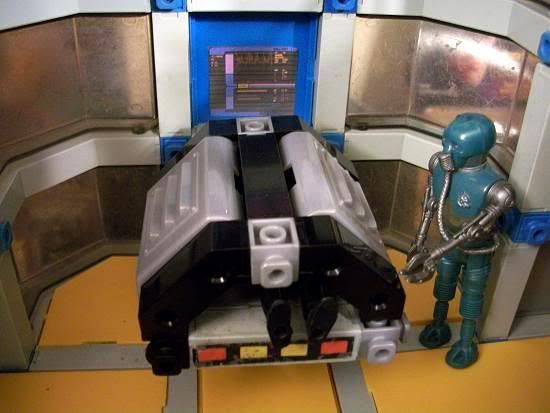
A special apparatus swings over him and locks in place. He may never come out the same.
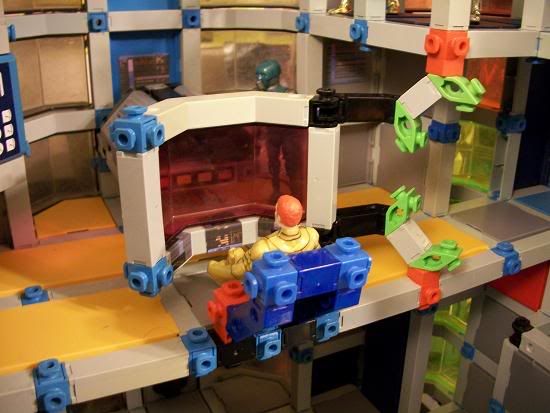
The chief medical officer oversees all of this. When required, the special data display seen here swings out in front of him. It can provide scans of and stats on the patient, and it can also provide some degree of shielding from radiation.
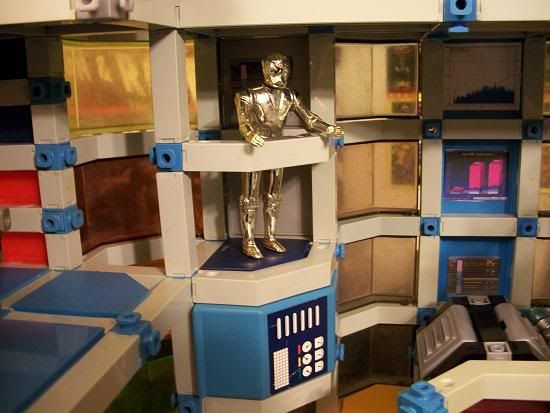
This is one of the other stations that help to monitor and control what's happening on the lab floor. For some more dangerous experiments/treatments, it would be necessary for all personal to work off the floor, which is why these stations are one level above.
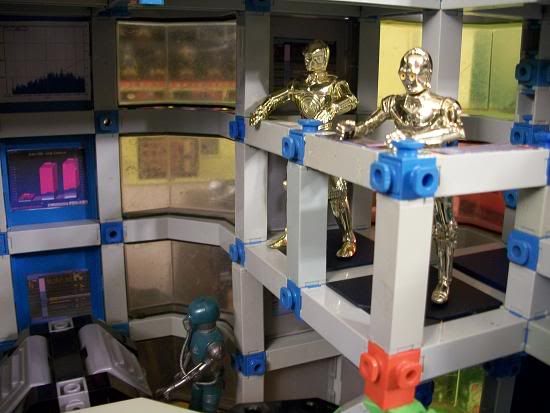
The other remote station. I intentionally chose not to make these stations symmetrical as I feel it adds to the look of the facility.
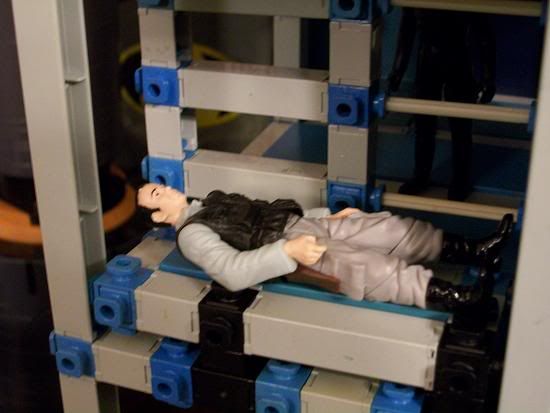
Level 3, left wing
While the floor of the Research Facility lies to the right, this area (formerly the conference room of the A208) is being used as a detention cell. The electric rods blocking the prisoner's escape are fully retractable. This cell's proximity to the lab is useful when dealing with hostile experimental subjects.
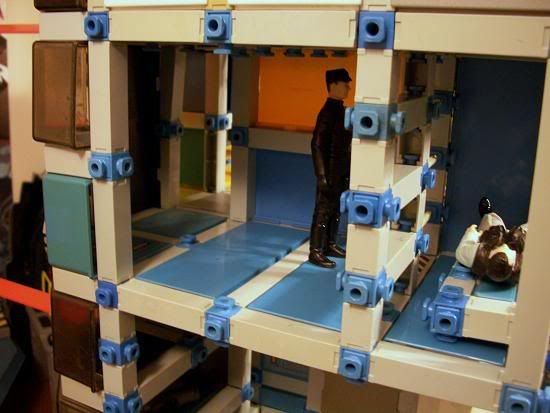
Our officer survived the experiment and is well enough to pay a visit to his detainee.
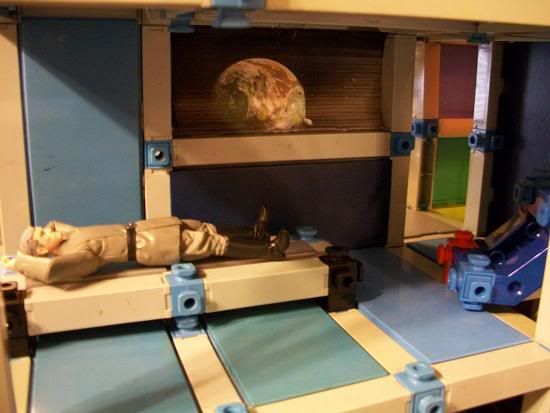
Level 3, right wing
The only thing that hasn't changed about the third floor is this, the captain's quarters. Though not originally part of the A208's design, this was added in a later modification and remains in the A209.
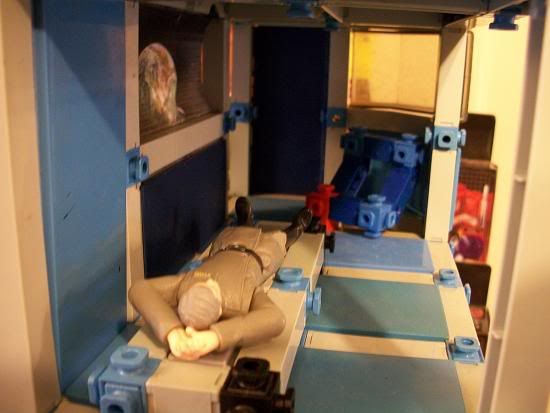
Only the best and most spacious for the captain.
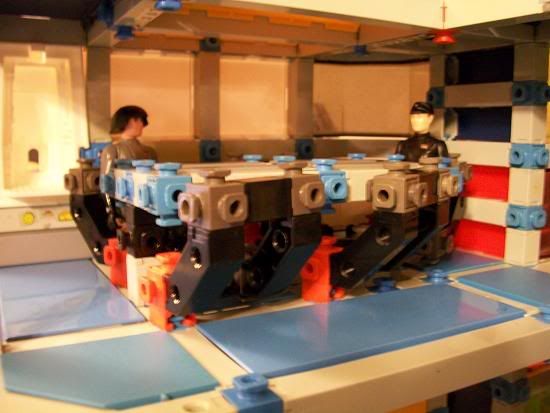
Fourth floor, left wing
The conference room from the A208 has moved up a level where I was able to give it more space. I've also added a food replicator console (to the left) so that this space can function as a mess hall. If and when something comes up that requires an immediate briefing, non-essential crew can be evacuated from this room on a moment's notice.
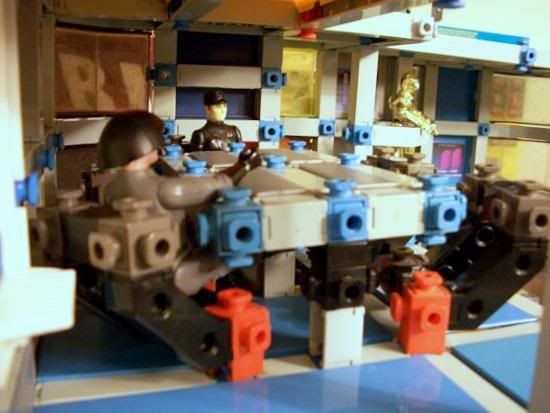
A bowl of Lucky Charms while aboard a giant mobile command fortress. Can life get any better?

Fourth floor, right wing
The White Room, a recreational area where off-duty crew members can unload the stress of their work day by lying down, listening to soothing music, watching peaceful images on the view screen, and possibly reading or putting on virtual reality goggles. It can also serve as quarters for medical patients who require comfort and close proximity to the lab.

I considered putting in a gym as well, where crew members could engage in more active pursuits, but I ultimately decided that such a space would just be a boring open room, which would be thoroughly uninteresting. As a result, these guys will have to count on their being frequent shore leave.
You'll notice that the 5th floor had not yet been built when this shot was taken.
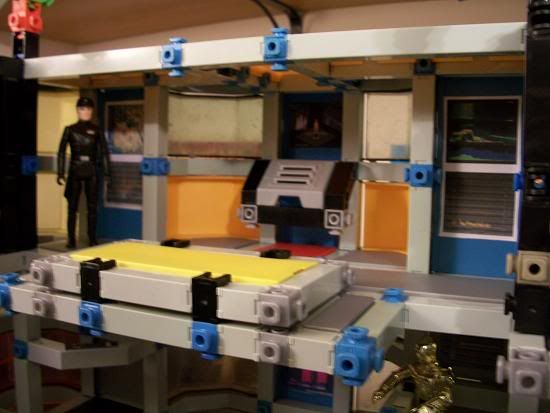
Level 5, Transporter Core
The A209's transporter and replicator systems have been enhanced tremendously by the addition of this room, which is essentially an automated industrial-sized transporter. The transporter pad on the Command Level is now just a remote platform for this far more sophisticated piece of machinery. While people rarely ever beam directly in and out of this room, their signals are routed through this transporter and guided by an elaborate array of computers and sensors, allowing for a safer and farther reaching transport.
When the Command Level transporter is not in use, the Transporter Core automatically scans the surrounding area and beams in and then breaks down dirt, rocks, vegetation, and even air in order to produce supplemental energy for the fortress as well as large quantities of useful elements that can be recycled by on-board replicators in order to save energy when producing replicated foods and other materials. Twice a day, it will also beam in and break down septic waste from designated areas on the ship in order to maximize energy/matter efficiency.
A third function of the Transporter Core is storage. In order to save storage space, items not being used can be dematerialized with their patterns stored in the Transporter Core's computer for later rematerialization.
Finally, the Transporter Core can be used to transport and replicate items that are too big for other onboard transporters and replicators. For example, in an emergency, the Core can replicate entire sections of the fortress's outer hull and then beam them into place. It can also transport entire groups of people (up to five at a time) and, in dire emergencies, quickly dematerialize an entire group of refuges and store their pattern in the Core's computer. There is a tremendous risk in doing this, but it's better than leaving an entire population to die.
From a play perspective, this room makes a great hideout for a stow-away since it usually runs automated. It can also be used for funerals, after which the body would be transported or dematerialized by the transporter pad.
Clearly, I've spent way too much time thinking about this room. It's not often that I get to add an entire new floor to the A200 series mobile command fortresses, so my choices really have to be thought out.
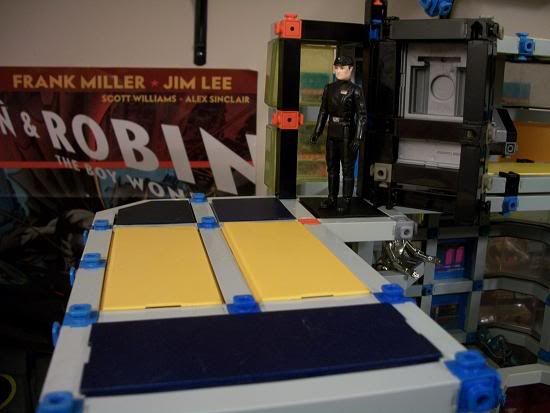
Level 5, left and right wings: Flight deck
The mobile command fortress now has two landing pads, accessible by turbolift, for small, one person aircraft.
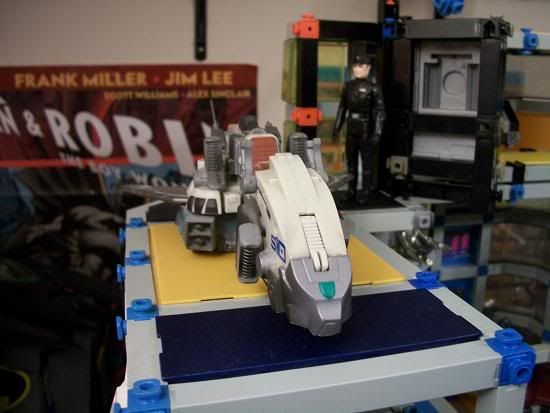
As usual, I'm using the airbikes from the old and forgotten Xyber9 series. Prior to building these flight decks, the airbikes had to be stored in the rear of the Command Level. This simply didn't make sense for a variety of reasons (not the least of which was how immensely complicated it would be to fly them out of such a tight space).

A heavy security door restricts access to the turbolift and, thus, the entire fortress.
About missing walls / cutaway sections
History of the A200 Series Mobile Command Fortress